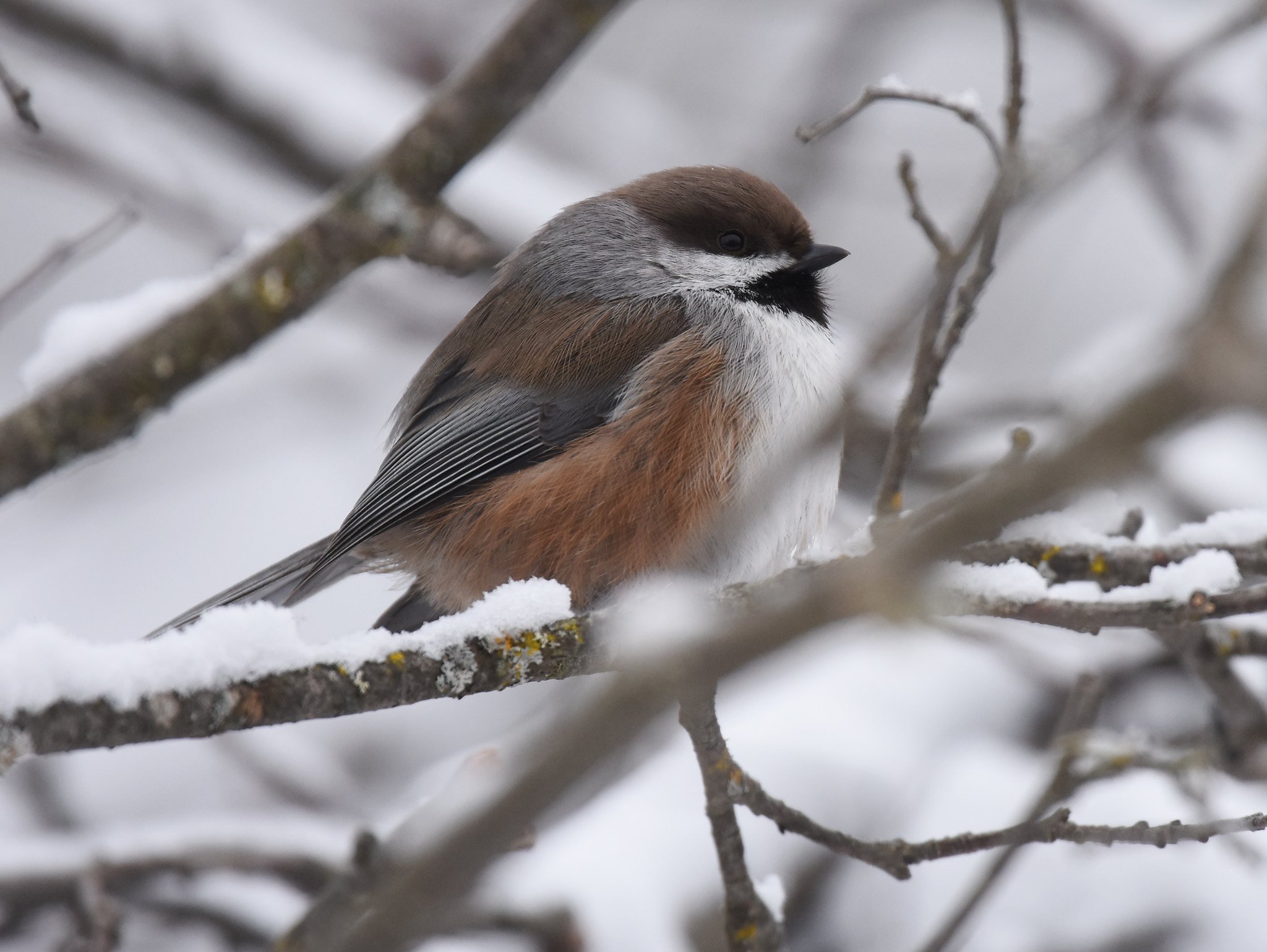Fancying themselves inhabitants of the frozen tundra, many Wisconsinites with the means nevertheless migrate to warmer climates for the winter, the so-called “snowbirds.” For those who stay, an embrace of winter might look something like the Norwegian philosophy called “friluftsliv,” known as free air living or an embrace of the outdoors. Of course this means dressing properly and finding an appreciation in the muted, subtle, and still ways of winter. It may even involve finding literal snow birds, like those delightful winter finches that decorate feeders and conifers come cold weather.
A plump Boreal Chickadee sits on a branch in the snow. Photo by Andy Reago & Chrissy McClarren
One of those winter birds which also spends its summer in Wisconsin is the Boreal Chickadee. On the southern edge of its range in Wisconsin, the Boreal Chickadee lives in characteristically wet and boreal environments with fun names like bog, muskeg, and tamarack, black spruce, or balsam fir swamps. Nutrients tend to leach from these soils, and the cold and damp conditions with a coniferous component allow a unique assemblage of birds to thrive; you might also find Spruce Grouse, Black-backed Woodpeckers, Gray Jays, or a number of more northern warbler species. Of course, getting to these spots in winter likely requires snowshoes, a map, determination, and slim chances at success, but still a good excuse to get outside. On a more depressing note, seeing a Boreal Chickadee in Wisconsin will become increasingly rare in the near future. Here is a climate projection for the boreal chickadee from Audubon’s 3 degree Celsius warming scenario:
This map shows the range loss for Boreal Chickadees if the plant warms by 3 degree Celsius. Map provided by National Audubon
Wisconsin’s first Breeding Bird Atlas confirmed 15 pairs of breeding Boreal Chickadees, the most recent Atlas had just two confirmations. Already, it seems the bird is being squeezed northward by changes in the landscape.
You won’t find Boreal Chickadees at Faville Grove; instead, you’ll have to make a visit to a bog or spruce stand in northern Wisconsin. Even then, you might not be far enough north; just a handful of sightings have been reported in the last couple of years in Wisconsin. Sam Robbins, the author of Wisconsin Birdlife, found documentation of Boreal Chickadees as far south as Madison and Oconomowoc in the mid twentieth century, though there's a close to zero percent chance of seeing a Boreal Chickadee in those spots today, another sign of their range contraction in Wisconsin. With just a search for the Boreal Chickadee, you’ll be embracing frilutsliv, and whether you find it or not, you might return to the warmth of a cabin and embrace “hygge” a Danish word that involves finding coziness with blankets and candles.
Written by Drew Harry, Faville Grove Sanctuary land steward
Cover photo by David Mitchell FCC







